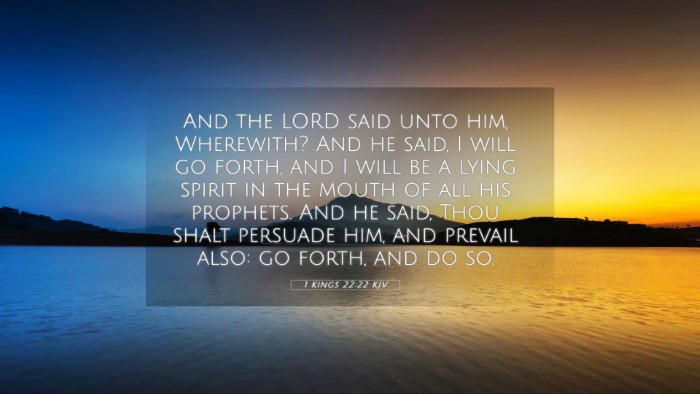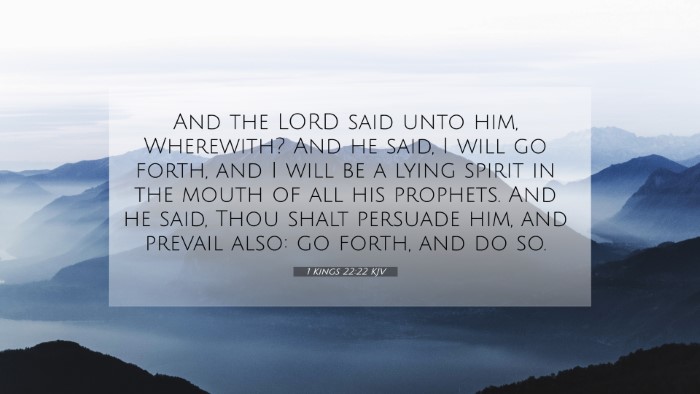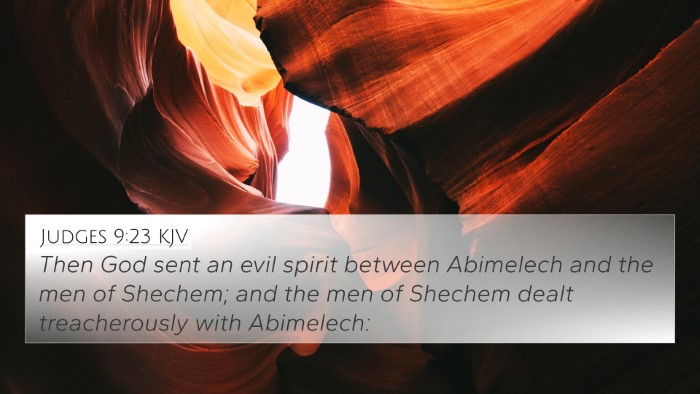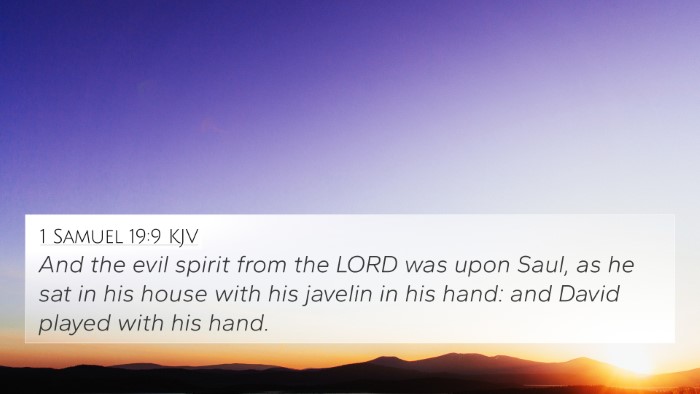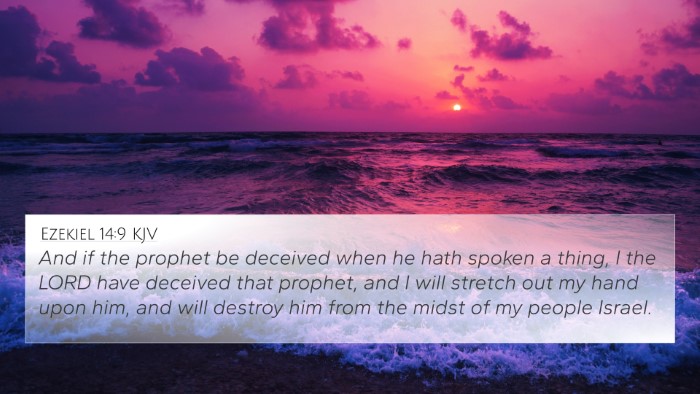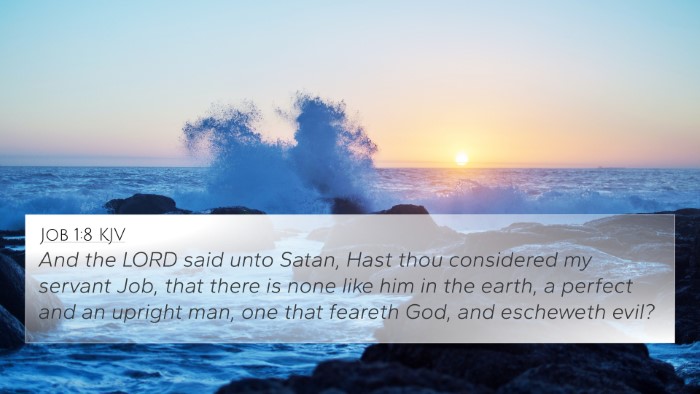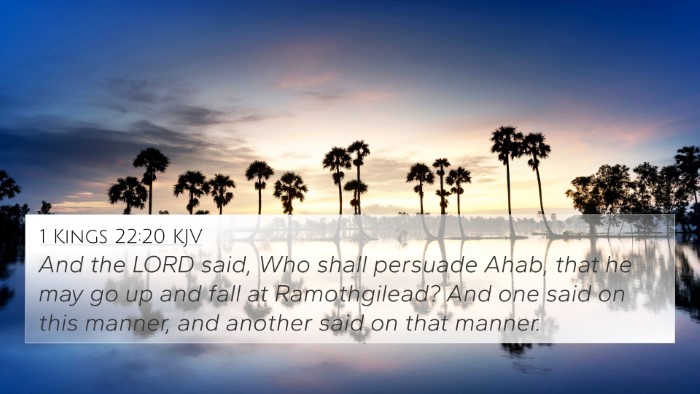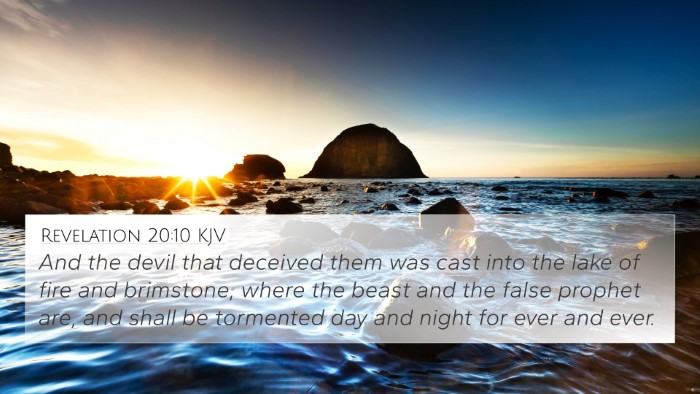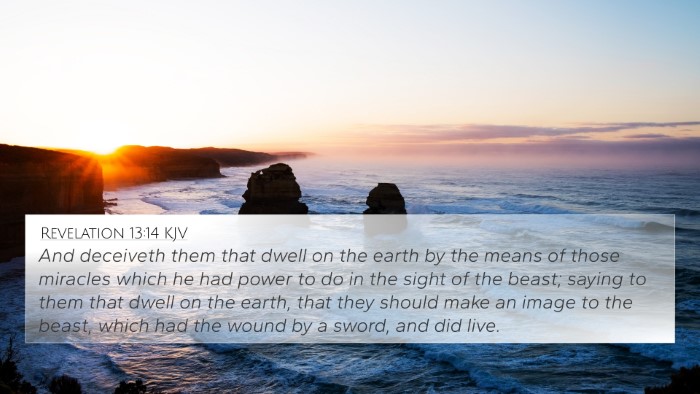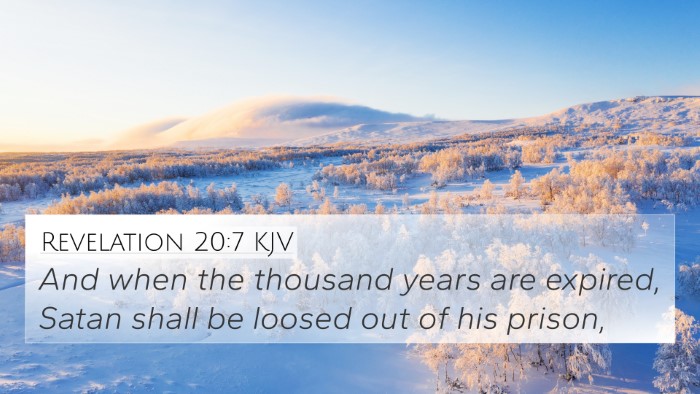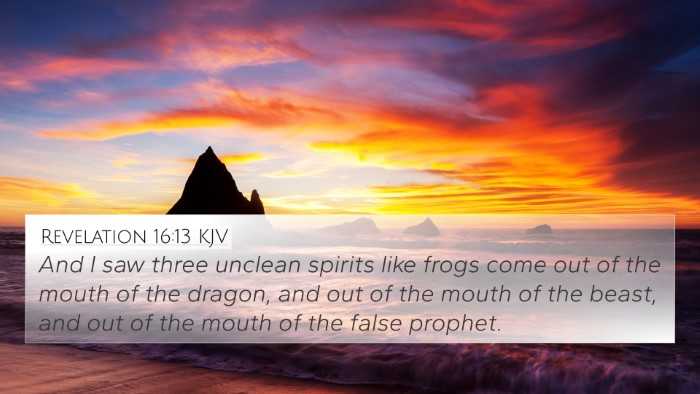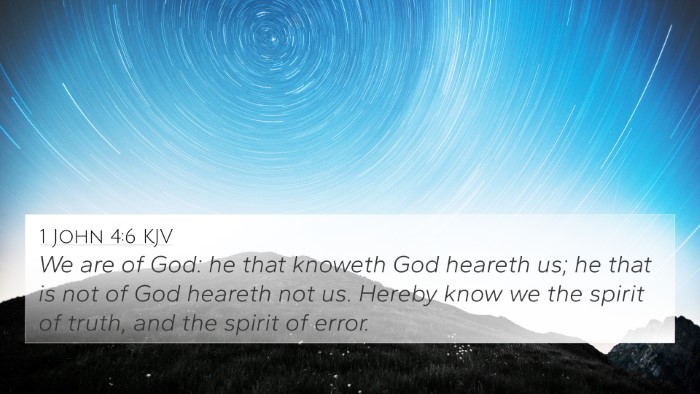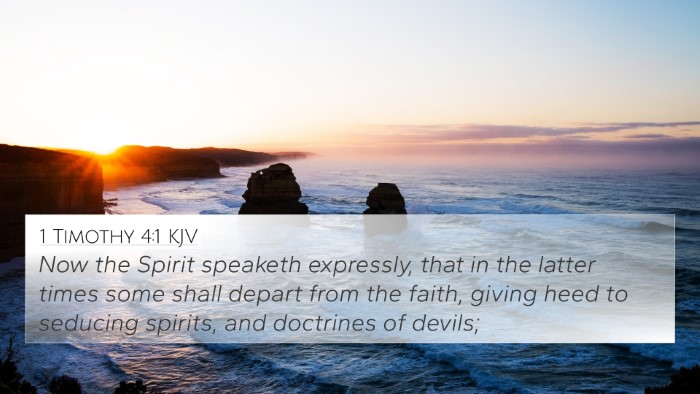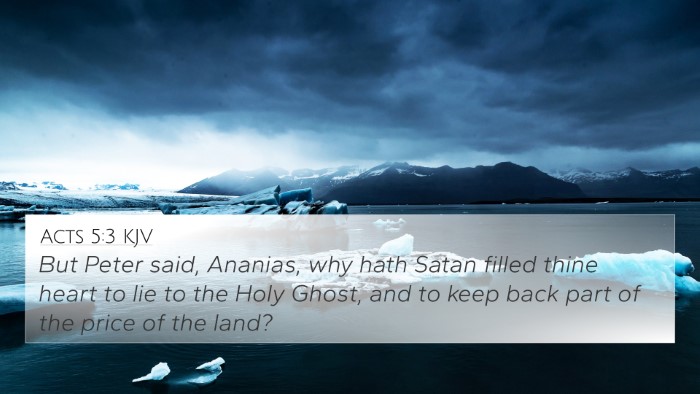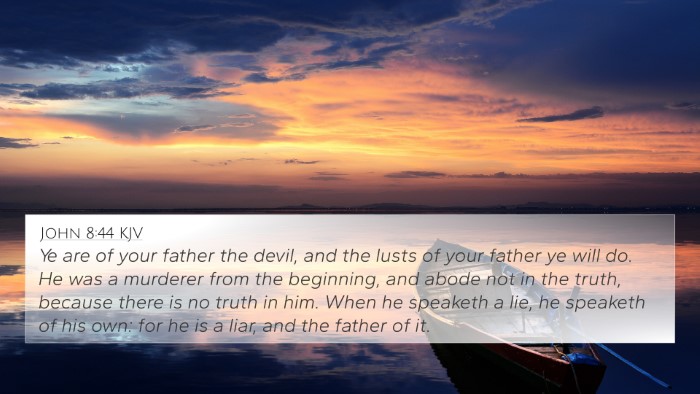Understanding 1 Kings 22:22
Bible Verse: 1 Kings 22:22
Meaning and Interpretation: In 1 Kings 22:22, we encounter a profound moment in the narrative of King Ahab’s fate. The verse reads:
"And the Lord said unto him, 'How?' And he said, 'I will go forth, and I will be a lying spirit in the mouth of all his prophets.' And he said, 'Thou shalt entice him, and thou shalt also prevail: go forth, and do so.'" (1 Kings 22:22, KJV)
This verse reveals the divine insight into the dynamics of truth, deception, and divine sovereignty. The passage unfolds within the context of a heavenly council, where a spirit offers to act as a false prophet to lead Ahab to his demise. This highlights several theological and moral themes worth exploring.
Theological Themes
- Divine Sovereignty: The verse starkly emphasizes God's ultimate authority over all spiritual entities. Despite the deception proposed by the spirit, God is in control of the outcome.
- Role of Prophets: Here, the prophetic role is examined, showcasing the distinction between true and false prophets. Ahab is misled by those who claim to speak for God while communicating deceit.
- Consequences of Sin: Ahab's continual rebellion against God's will leads to his vulnerability to deception. The verse serves as a warning about the spiritual blindness that sin can produce.
Insights from Commentaries
Matthew Henry: Henry suggests that this passage illustrates the manner in which God can use deceptive means to fulfill His purpose. He emphasizes that while the lying spirit acts, it is God who permits and ultimately directs this action toward Ahab's judgment.
Albert Barnes: Barnes discusses the implications of receiving false guidance. He points to Ahab's poor choice in corrupt advisors, which leads to his ruin. This commentary highlights the importance of discernment in selecting spiritual guidance.
Adam Clarke: Clarke offers a deeper exploration of the lying spirit, proposing that it reflects the deceptive nature of evil. He notes the concept of human agency in relation to divine orchestration, focusing on how God allows misguidance to meet His purposes.
Cross References
This verse is linked to several other Biblical texts that amplify its meaning:
- 2 Thessalonians 2:11-12: Discusses the sending of strong delusion upon those who do not love the truth.
- Jeremiah 14:14: Relates to false prophets claiming to speak for God.
- Micaiah's Prophecy (1 Kings 22:17): Highlights the contrast between true and false prophets.
- Proverbs 14:12: "There is a way which seemeth right unto a man, but the end thereof are the ways of death."
- Isaiah 19:14: Indicates God sending a spirit of confusion among Egyptians, similar to the spirit among Ahab’s prophets.
- James 1:17: Expounds on God as the source of every good gift, reinforcing the theme of deception versus truth.
- Matthew 24:24: Warns about false prophets and deceit in the latter days, echoing themes from 1 Kings.
Application of 1 Kings 22:22
In examining 1 Kings 22:22, it is crucial to apply its insights into modern contexts:
- Discernment: Believers are called to discern accurately between truthful counsel and deception, especially in spiritual matters.
- Understanding Consequences: The narrative encourages followers of God to recognize the lasting repercussions of their choices, particularly when straying from divine guidance.
- Seeking Truth: It emphasizes the necessity to align oneself with true prophecy and revelation from God rather than succumbing to popular or easier paths.
Conclusion
1 Kings 22:22 serves as a challenging yet enlightening passage that unveils the complexities of divine interaction with humanity through the lens of prophecy and truth. The interplay of God's purpose, human agency, and the peril of deception is profoundly relevant today. Through understanding and cross-referencing this verse with others, one can gain a more comprehensive and nuanced appreciation of Biblical themes and teachings.
Further Study
For those interested in deeper exploration, various tools for Bible cross-referencing are available, allowing readers to connect themes and narratives throughout scripture. Resources such as a Bible concordance or cross-reference Bible study guides can aid in this pursuit.

